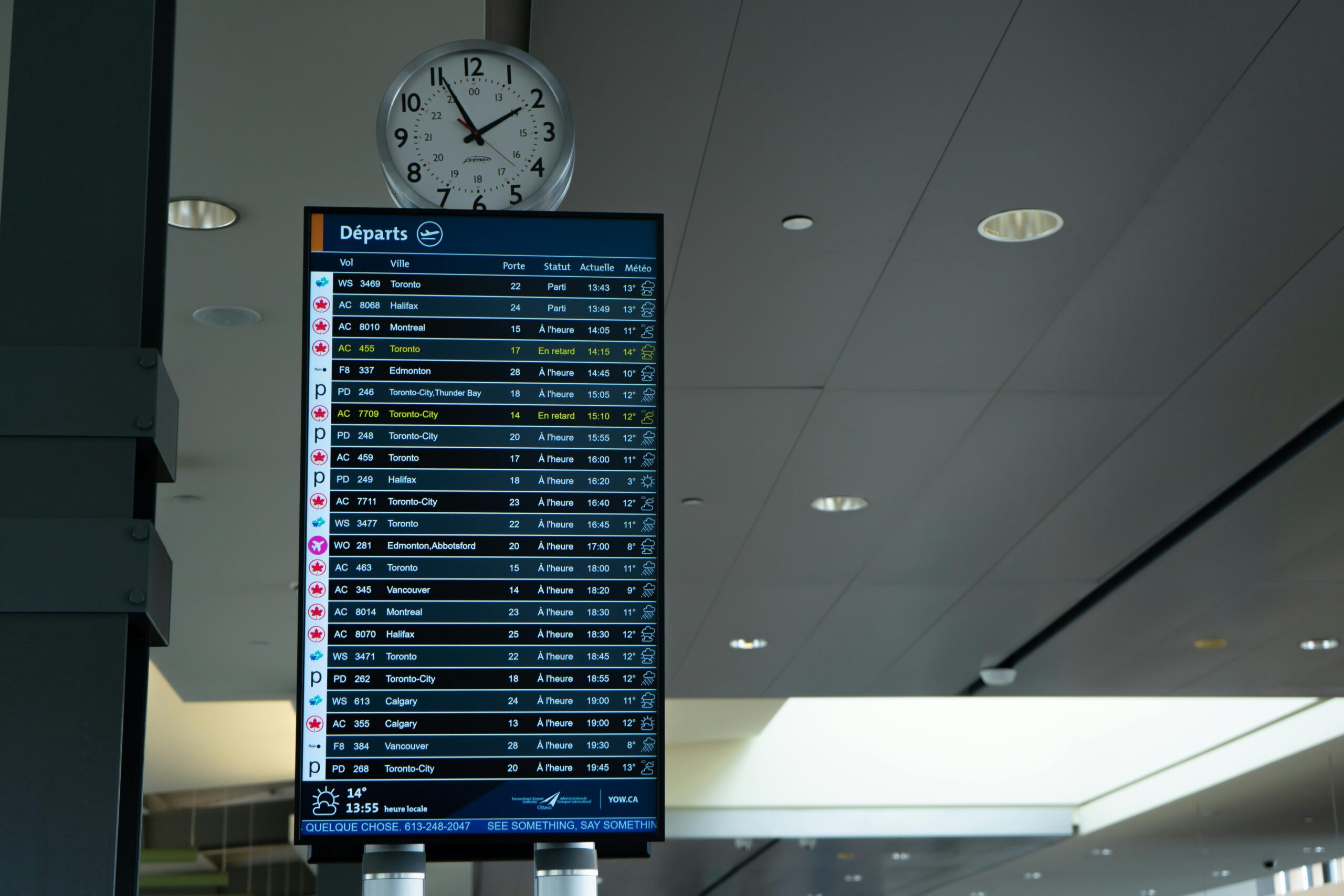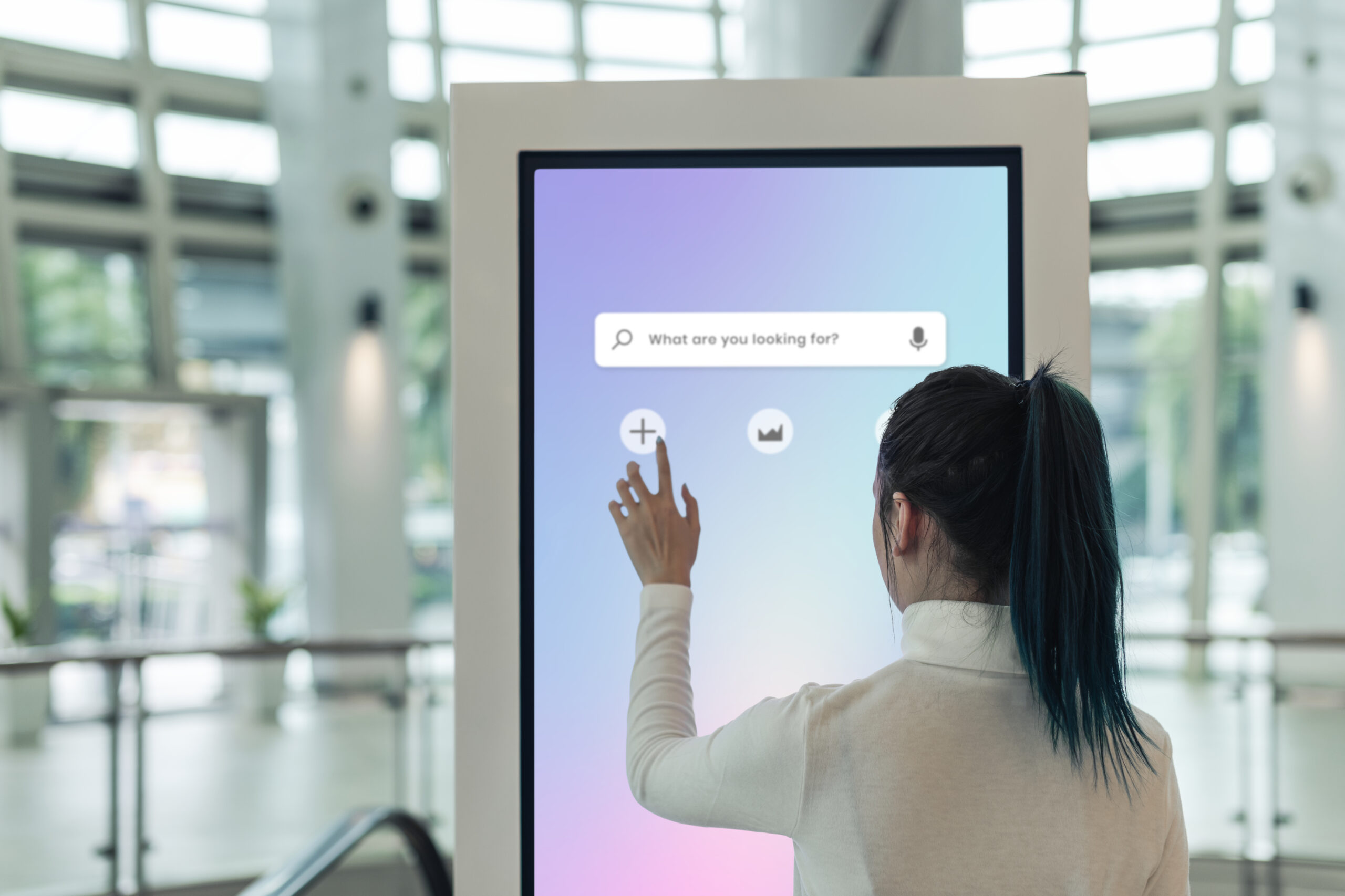
Lumepix offers screens designed for professional use that differ from regular home televisions not only in terms of technical solutions, but also in their features and reliability. These are created to meet specific demands such as 24/7 operation, higher reliability, intensive use, and technical support. Major screen manufacturers, like Samsung and LG, offer a wide range of screens designed for use in public spaces, outdoor environments, and conference rooms, etc.
Screens for Business Use:
Digital Signage LCD Screens are professional displays designed for continuous and reliable use across various business environments. These screens showcase dynamic content such as advertisements, informational messages, and instructions.
Main features:
✔ Long-Life Screens – designed for 16/7 or 24/7 operation
✔ High Resolution and Brightness Level – clear picture even in strongly lit environments
✔ Centralized Content Management – built-in remote control and scheduling capabilities
✔ Thin Design and Narrow Bezels – aesthetic and modular installation
Touch-Sensitive LCD screens that allow users to interact with the device via touch. These screens are essential in many fields, offering an intuitive user experience and enhancing engagement.
Main features:
✔ Various Touch Technologies – capacitive, resistive, infrared, and optical touchscreens
✔ Multi-Touch Functions – supports simultaneous touches and gestures
✔ Wear Resistance and Durability – scratch-resistant coatings and reinforced glass
✔ Easy Integration – works with computers, media players, and kiosk systems
✔ Precision and Fast Response – suitable for use with both a stylus and a finger
Weatherproof LCD Screens are specially designed screens that can withstand extreme weather conditions such as rain, snow, dust, and extreme temperatures. These screens are equipped with a robust construction and increased brightness to ensure optimal visibility even in intense sunlight.
Main features:
✔ IP56 or higher protection rating – dust, moisture, and vandalism resistant design
✔ High brightness (2500+ nits) – visible even in direct sunlight
✔ Temperature resistance (-30°C to +50°C) – built-in cooling and heating systems
✔ Anti-glare and UV-protected screen – reduces reflections and extends lifespan
✔ 24/7 Operability – designed for continuous operation in public spaces
Video Wall LCD Screens are specialized high-resolution screens with slim bezels that can be combined into a larger display area. They are designed for 24/7 operation and are ideal for professional use where a large, dynamic, and clear visual solution is required.
Main features:
✔ Very slim bezel (bezel-to-bezel <1 mm) – seamless image continuity between different screens
✔ Modular solution – screen configuration tailored to needs (2x2, 3x3, 4x4, etc.)
✔ High resolution and image quality – 4K and 8K support for large-scale displays
✔ Automatic color calibration – uniform color reproduction across the entire screen matrix
✔ Centralized content management – supports HDMI, DisplayPort, video processors, and content management software
✔ 24/7 Operability – designed for continuous operation in control and advertising applications
Video Conferencing LCD Screens are specialized professional displays designed for use in meeting rooms, conference halls, and remote collaboration solutions. They provide outstanding image quality, integrated audio and camera support along with compatibility with popular video conferencing platforms such as Microsoft Teams, Zoom, Google Meet, and Cisco Webex.
Main features:
✔ High resolution (4K UHD, HDR support) – sharp and clear image
✔ Large diagonal (55"–98") – optimal visibility in the meeting room
✔ Built-in or standalone video conferencing cameras – AI features such as automatic framing
✔ High-quality built-in speakers and microphones – clear audio even in larger rooms
✔ Touchscreen variants – for interactive use and note-taking
✔ Easy compatibility and connectivity – HDMI, USB-C, DisplayPort, wireless sharing (Miracast, AirPlay)
✔ Microsoft Teams Rooms and Zoom Rooms support – plug-and-play solutions
Digital LCD Whiteboard is a modern interactive display that allows writing, drawing, and note-taking directly on the screen. It is widely used in education, business environments, and teamwork, offering a paperless and smart collaboration experience.
Main features:
✔ Touch and stylus support – allows natural writing and sketching
✔ High resolution (4K UHD) – clear and detailed display
✔ Real-time collaboration capabilities – sharing notes via cloud services
✔ Built-in software – supports whiteboard applications, PDF, and Office documents
✔ Wireless connectivity – Miracast, AirPlay, and USB-C support for screen sharing
✔ Multi-user support – enables simultaneous collaboration
✔ Scratch-resistant and durable surface – suitable for frequent use
✔ Integrated video conferencing support – compatible with Zoom, Teams, and Google Meet
Key technical parameters when choosing a screen:
Most Common Diagonal Sizes of LCD Screens
13"/ 24"/32"/43"/46"/50"/55"/65"/75"/85"/98"/110"
- 1920x1080 (Full HD) – Most commonly used, affordable
- 2560x1440 (QHD) – Popular for gaming and work
- 3840x2160 (4K UHD) – Suitable for large screens and detailed content
- 7680x4320 (8K UHD) – Increasingly used in professional settings for very large screens, high cost
60Hz – 75Hz – Common for office screens
120Hz – 144Hz – Smoother motion for gaming and watching movies
240Hz – 360Hz – E-sports and fast-paced games
CCFL (Cold Cathode Fluorescent Lamp) – Older technology, lower efficiency
LED backlighting – Modern standard, higher brightness, and better energy efficiency
MiniLED – Best LCD technology, deeper blacks and higher contrast
Screen Usage Areas
- indoor conditions - depending on the usage location, screens with 16/7 or 24/7 operating time. Either lower or higher backlight (350-700 nits)
- in the shop window under sunlight (better cooling, and minimum 1500 nits)
- Outdoor conditions (minimum IP56 and, if necessary, vandal-resistant enclosure)
Display Technologies
LCD (Liquid Crystal Display): A screen that uses liquid crystals to change colors but requires separate backlighting. Widely used and affordable technology, but its brightness and contrast are limited compared to newer technologies.
LEDs (light-emitting diodes) are used for backlighting. They are more energy-efficient and offer better contrast compared to older backlighting types. Very widely used today as well.
OLED (Organic Light Emitting Diode): Each pixel is individually illuminated, making black colors truly deep and the contrast very sharp. This technology does not require backlighting and is one of the best in terms of screen image quality.
QLED (Quantum Dot LED): An LED screen that uses small quantum dot particles to improve color and brightness accuracy. Typically found in Samsung screens, offering very good color reproduction.
MiniLED technology uses thousands of small LEDs to enhance the brightness and contrast of LCD screens.
Features:
- With better contrast and deeper blacks compared to traditional LCDs.
- More energy-efficient than standard LED backlighting.
- Used in high-quality displays.











